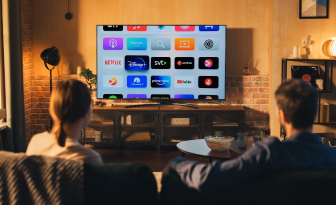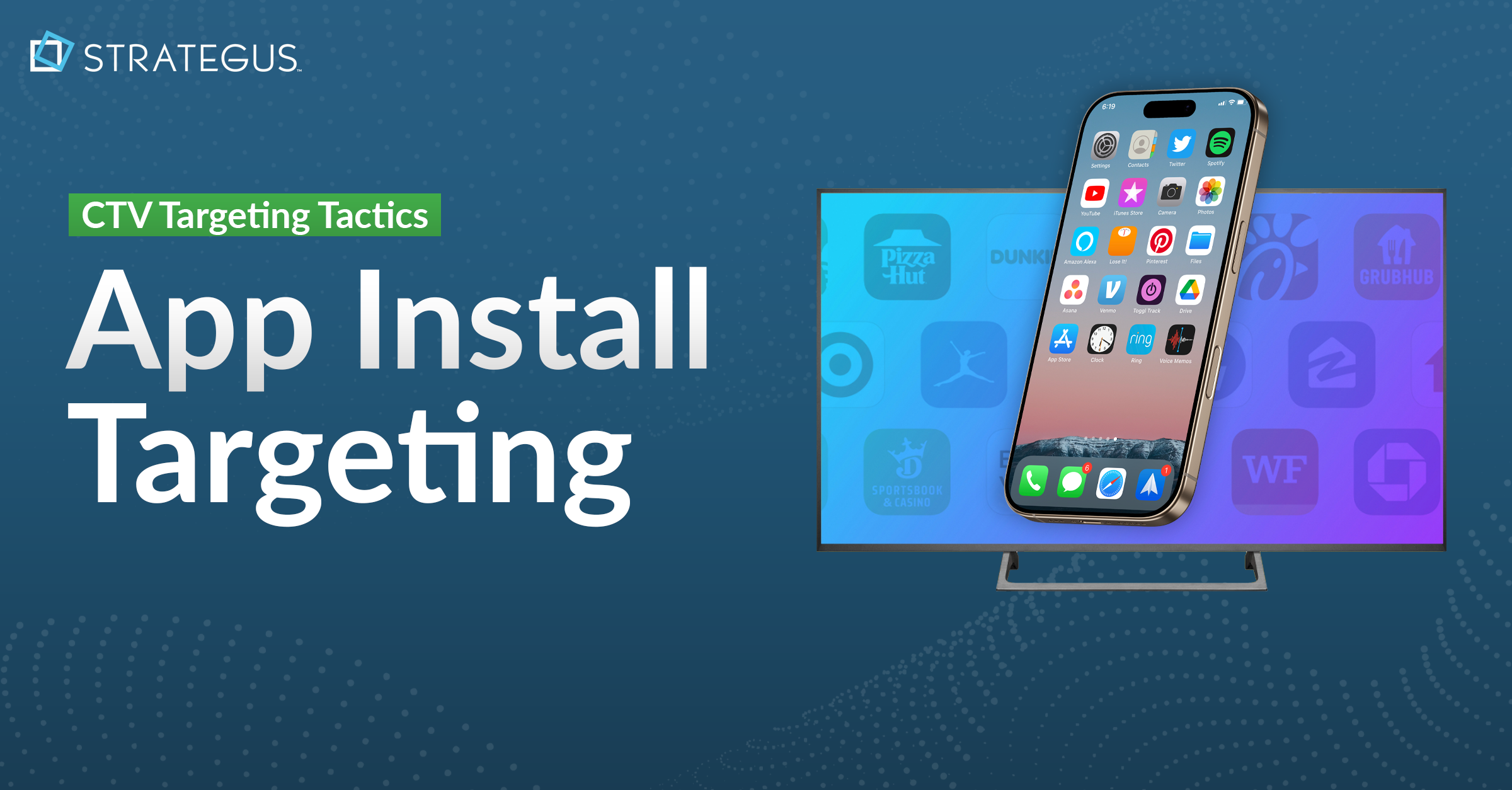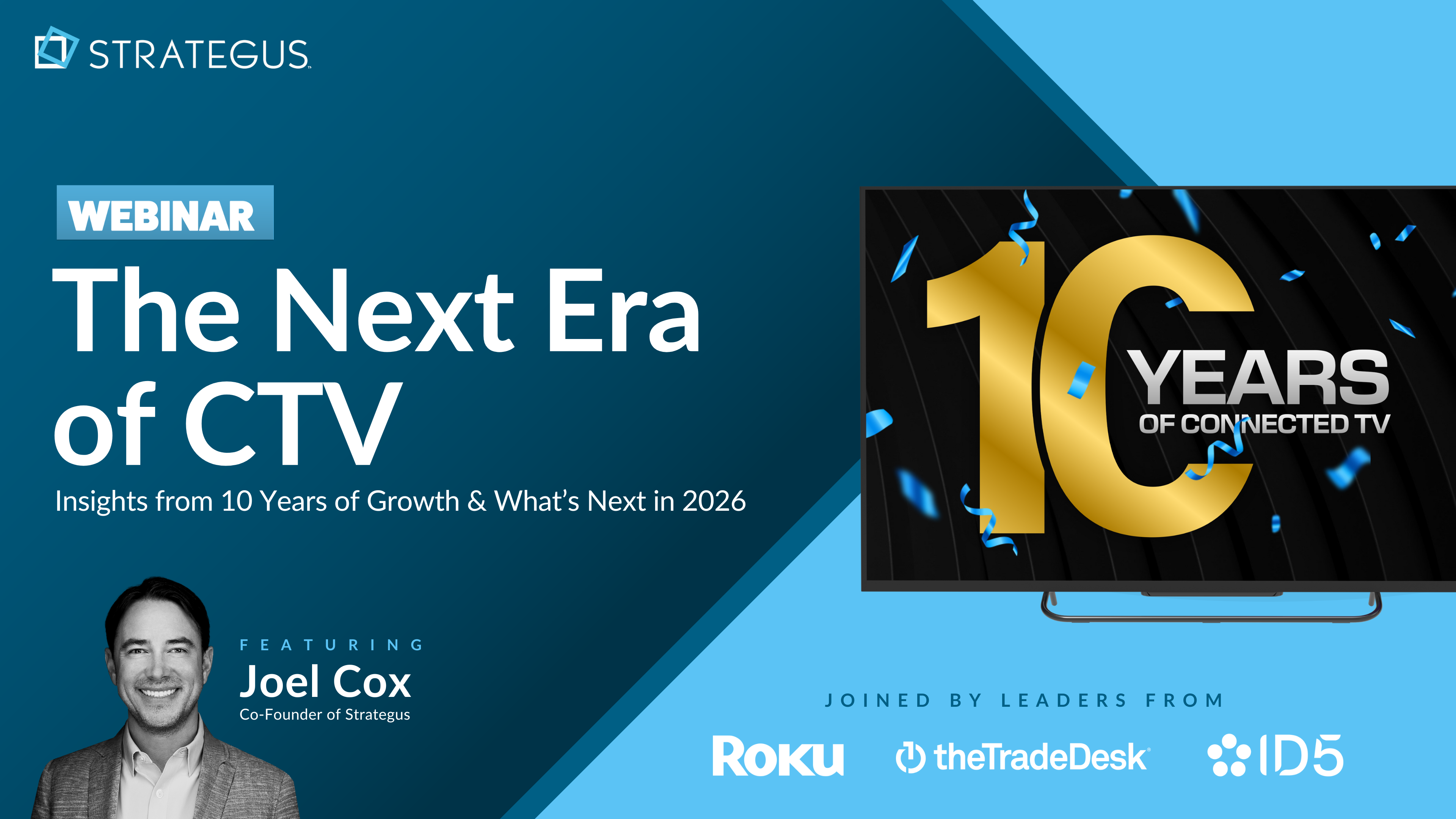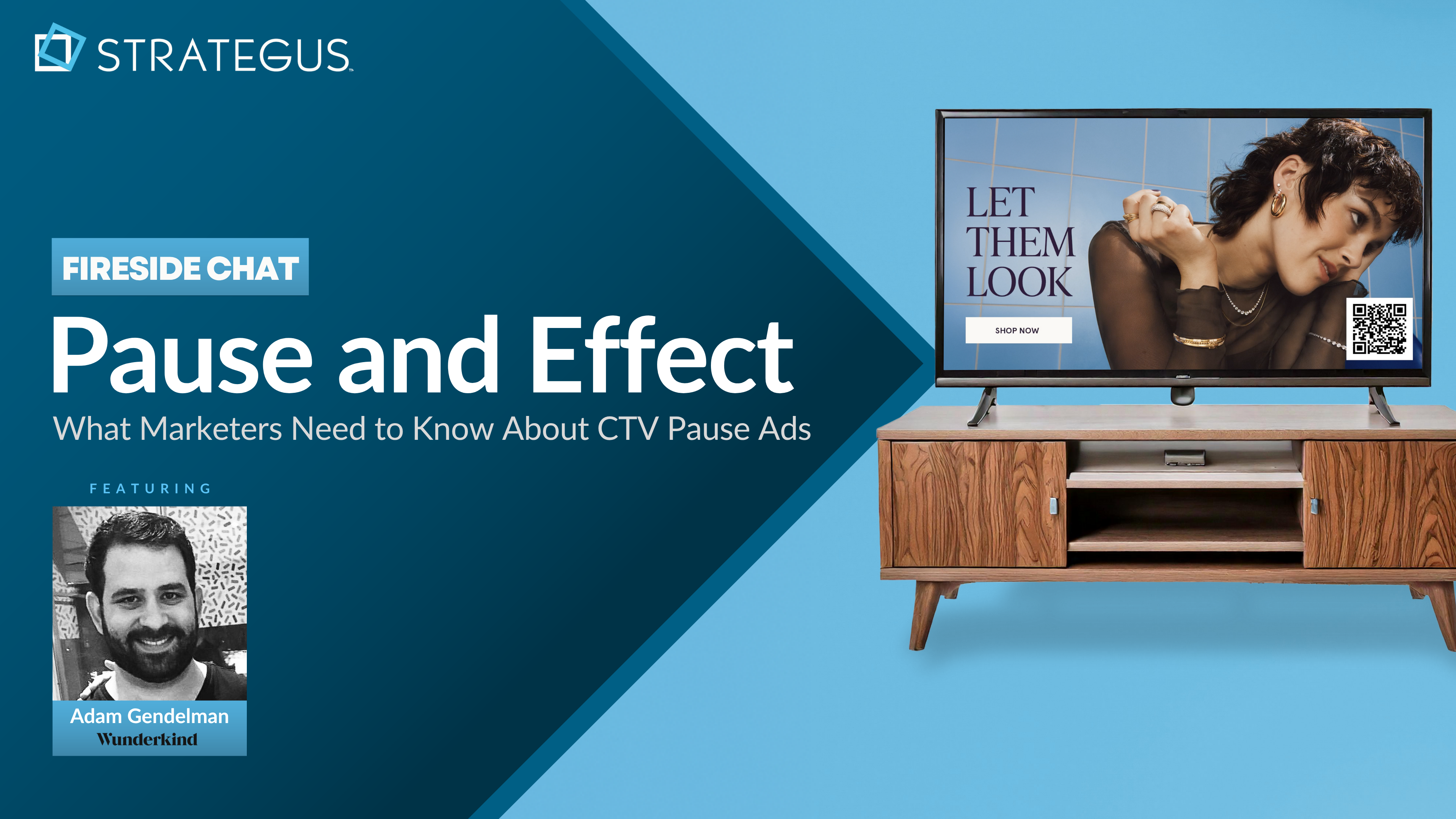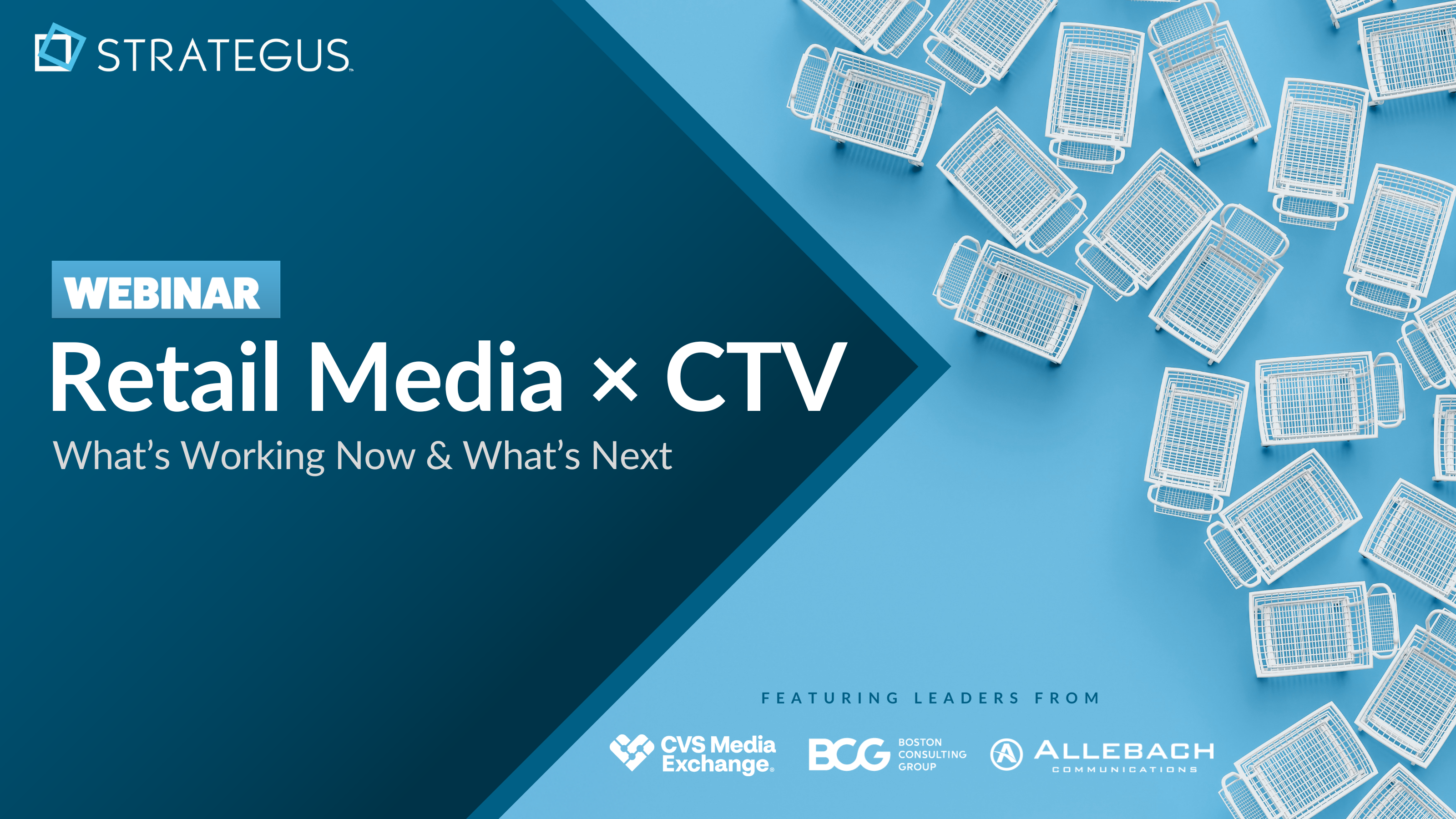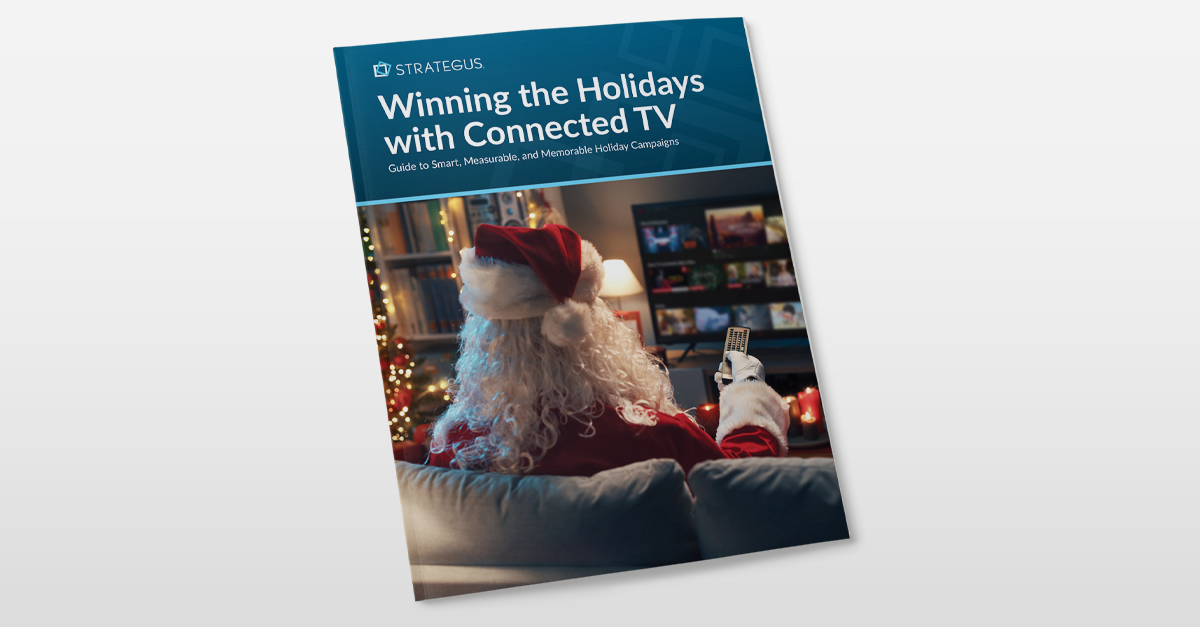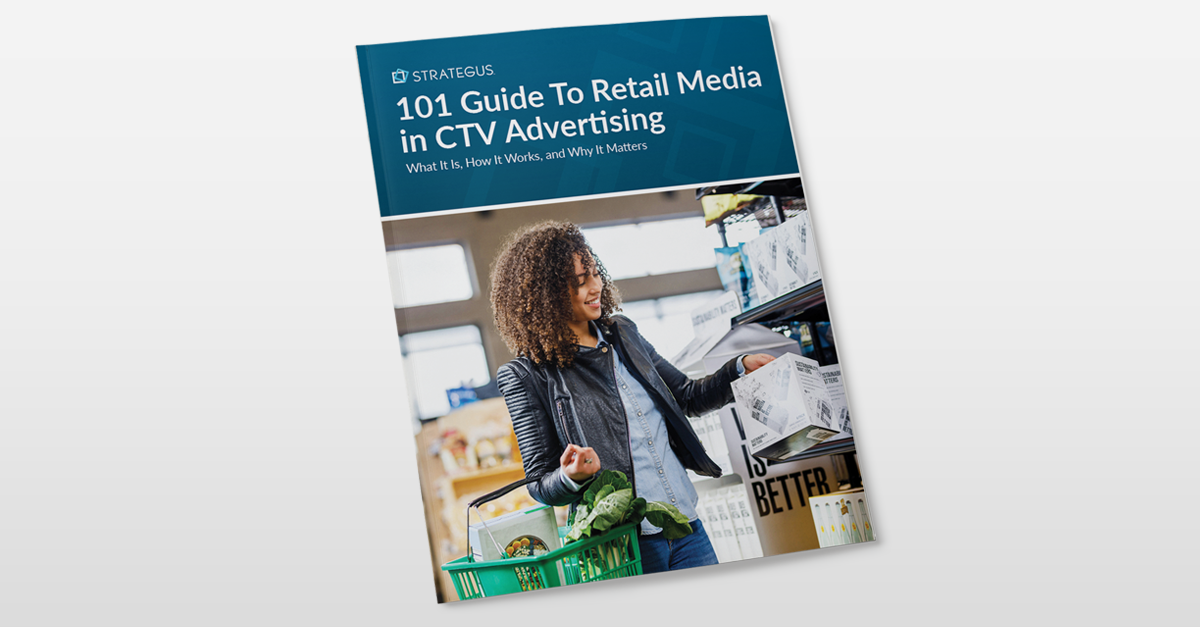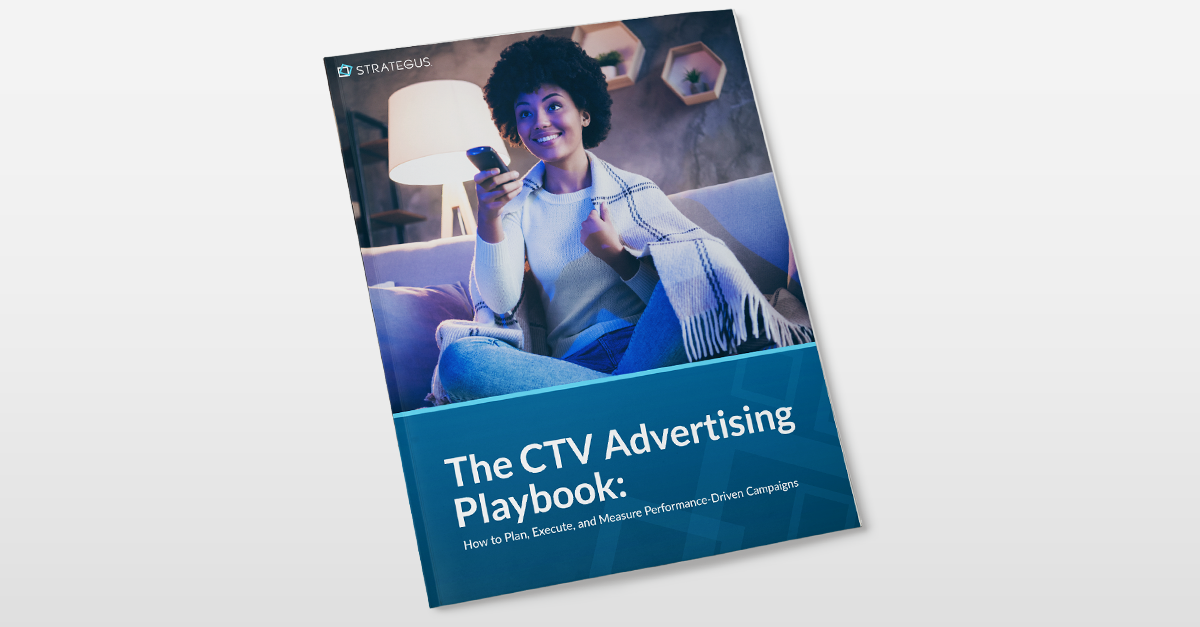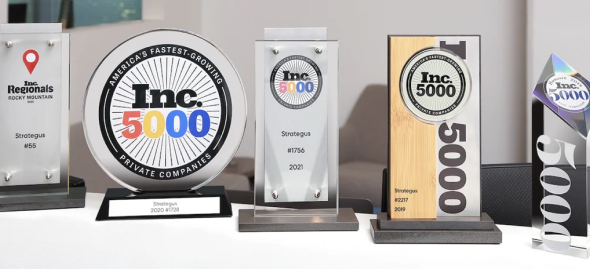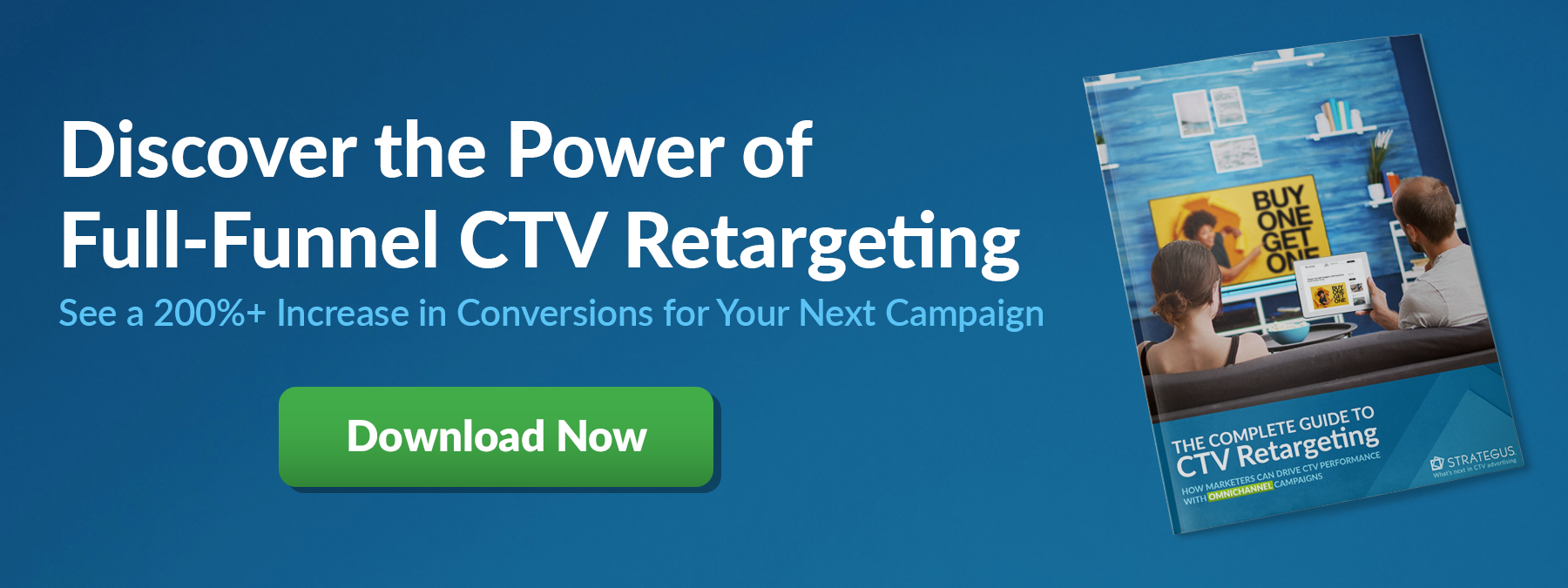- Home
- Strategus Blog
- Direct vs Programmatic Advertising: What's The Difference?
Direct vs Programmatic Advertising: What's The Difference?
10 minutes read
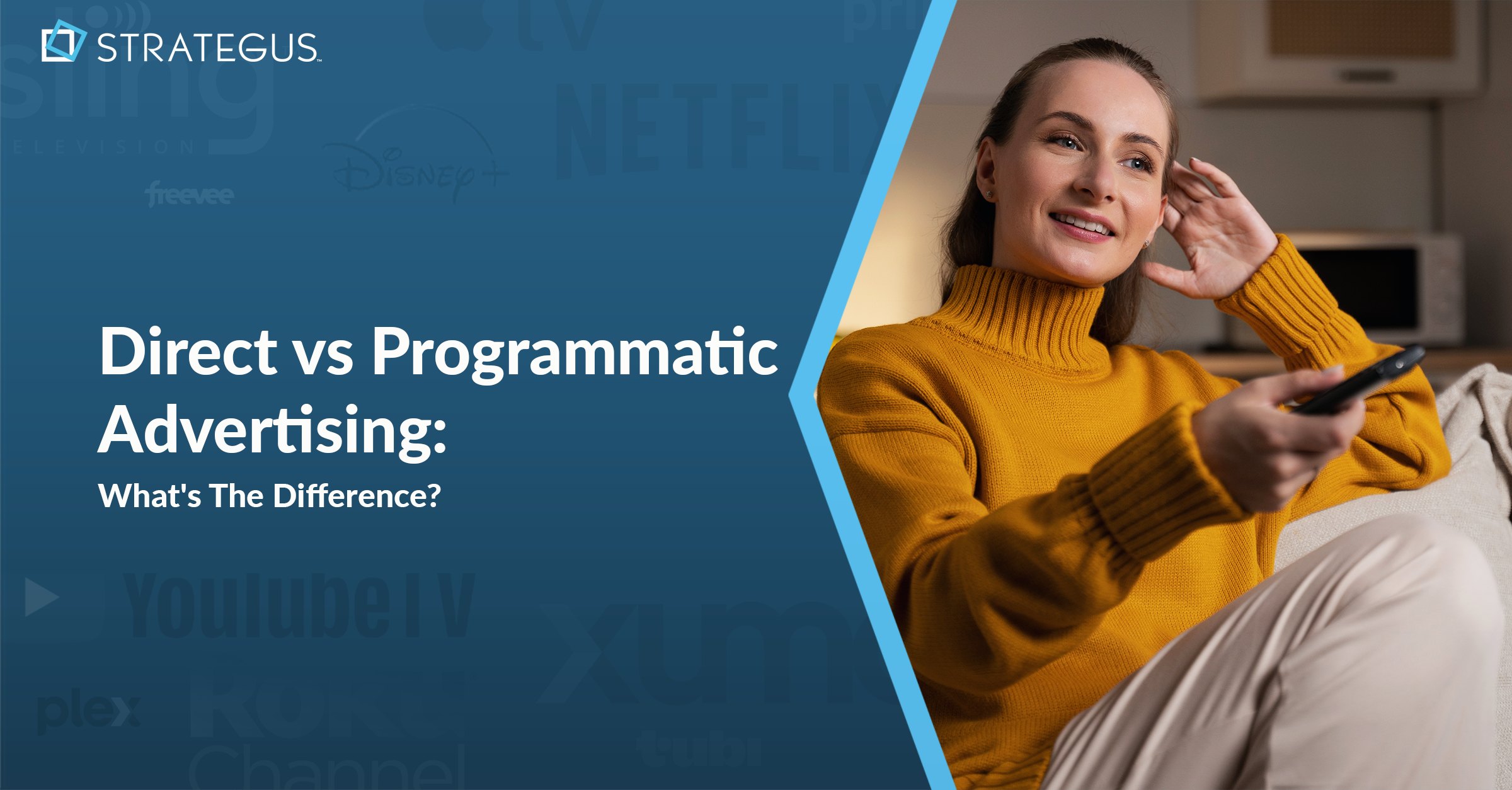
Ever noticed how the ads you see online seem eerily relevant to that conversation you just had or that product you browsed yesterday? That's no coincidence; it's the result of a massive shift in how digital advertising works.
The advertising world is split between two approaches: direct advertising's traditional handshake deals and programmatic's algorithmic precision. While one relies on human relationships and manual insertion orders, the other uses real-time auctions and audience data to deliver ads in milliseconds.
For marketers looking to advertise, understanding this distinction is the difference between efficient, targeted campaigns and wasted ad dollars. Before ad exchanges came along, buying media meant exclusive, direct negotiations with publishers. This worked fine initially, but as the publishing world expanded, the process became increasingly cumbersome and manual.
This article looks more into the modern advertising industry to explain exactly how these two approaches differ, why programmatic has captured the majority of connected TV (CTV) buys, and which approach might be right for your business. We've distilled insights from across the industry to give you a clear picture of what's happening behind the scenes every time an ad appears on someone's screen.
Key Takeaways
- Direct advertising uses manual negotiations for guaranteed placements, while programmatic advertising automates real-time bidding for efficiency and targeting precision.
- Programmatic ads use behavioral and demographic data to reach individuals, unlike direct buys that rely on broad content-based assumptions.
- Programmatic offers faster setup, dynamic pricing, and real-time optimization, while direct deals are slower but provide premium inventory and placement control.
- Combining both methods, direct for brand building and programmatic for performance, creates stronger full-funnel campaigns across platforms.
- Thanks to shifting consumer behavior, data privacy changes, and growing demand for measurable, cross-device campaigns, CTV is now 75% programmatic
- Strategus delivers fully managed programmatic campaigns with premium inventory, advanced attribution, and real-time optimization, driving results without complexity. Talk to a Strategus expert today.
What Is Direct Advertising?
Direct advertising is the traditional handshake deal of media buying. You pick up the phone, call a publisher, negotiate terms, and secure your ad placements through personal relationships and manual processes.
The process is straightforward but time-consuming: identify where you want your ads to appear, reach out to those publishers directly, negotiate pricing and placement details, then execute through insertion orders or direct contracts.
This approach gives you complete visibility into where your ads will run. You know exactly which programme your 30-second spot will appear during, which website your banner will occupy, and when your audience will see it. The manual nature means every deal requires human intervention, but it also provides guaranteed placements and often access to premium inventory that publishers reserve for direct relationships.
What Is Programmatic Advertising?
Programmatic advertising automates the entire media buying process through real-time bidding systems. Instead of calling publishers, you're competing for ad impressions in milliseconds as viewers consume content.
Here's how it works: A viewer starts watching content, the platform sends out a bid request with audience data, advertisers automatically bid based on their targeting criteria, and the winning ad gets served, all before the commercial break begins.
Programmatic advertising started in the early 2000s. While it was originally only used for display ads and the like, it’s now found its way into much higher-impact channels like CTV and digital out of home (DOOH).
The core benefits center around automated precision: Advertisers get smarter, more efficient ad buying with algorithms that handle everything from audience evaluation to bid placement to ad serving. This frees up time to focus on strategy and creative rather than manual negotiations with individual publishers.
Good vs. Bad Programmatic Advertising
Not all programmatic advertising is created equal. While the promise of automation, scale, and targeting is powerful, poor execution can lead to wasted spend, ad fraud, and disappointing results. Bad programmatic advertising often stems from misaligned strategy, lack of oversight, and overreliance on self-serve platforms or partners who treat your campaign as just another line item.
The result? Generic targeting, minimal transparency, and little accountability.
But it doesn’t have to be that way. We created the team at Strategus to raise the bar and realize the full promise of programmatic advertising.
As a managed service partner, our team at Strategus delivers the sophistication of a top-tier programmatic solution without the complexity. We serve as a strategic extension of your team, combining technical expertise with hands-on management to help you achieve measurable outcomes.
Here’s how Strategus sets the standard:
- Audience Precision: We use real-time data and layered targeting (demographics, behaviors, locations, and more) to ensure your ads reach the right viewers at the right time, across all screens and devices.
- Transparent Attribution: Our custom reporting dashboards show what’s working, from impressions to conversions. No black boxes, just actionable insights.
- Premium CTV Inventory Access: We connect you to top-tier inventory across all major streaming platforms, bypassing the fragmentation that plagues DIY campaigns.
- Fully Managed Multi-Platform Campaigns: From setup to optimization, our team handles every detail while transacting across our network of 200+ inventory partners. You stay focused on strategy, and we’ll handle the execution.
Ready for programmatic done right? Talk to a Strategus expert to learn more today.
Programmatic vs. Direct Advertising: Key Differences
Understanding the key differences between programmatic and direct advertising is the first step to making smarter decisions with your ad budget and knowing which approach will actually connect with your audience when it matters most. Here’s what you need to know.
Targeting Capabilities
Direct advertising relies on broad assumptions about audience behaviour. You're essentially betting that people watching cooking shows are interested in kitchen products. It's educated guesswork based on content consumption patterns, using demographics and programming types to make targeting decisions.
Programmatic advertising targets individuals based on actual data. We can reach people who have recently searched for kitchen renovations, visited cooking websites, or purchased culinary products, regardless of what they're currently watching. A national nut brand we worked with used this precision to achieve a 5x return on ad spend and generate $6.3 million in estimated total revenue by targeting health-conscious consumers and snack enthusiasts across the entire streaming ecosystem.
Campaign Efficiency and Speed
Direct advertising often involves a slow, manual process. Marketers must negotiate with individual publishers, manage insertion orders, and manually coordinate every campaign detail. Any changes mid-campaign typically require renegotiation, making this method time-consuming and inflexible. It can take weeks, or even months, to go from planning to launch.
In contrast, programmatic advertising allows for near-instant campaign deployment. Adjustments can be made in real-time based on live performance data, enabling faster responsiveness and continuous optimization without pausing or restarting a campaign.
Scale and Inventory Access
With direct advertising, access to ad inventory is limited to the publishers you’ve individually negotiated with. Expanding reach, especially across streaming services and platforms, means managing multiple deals and contracts, which can quickly become fragmented and inefficient.
Programmatic advertising simplifies this by aggregating inventory from hundreds of sources. This enables advertisers to reach audiences across a wide variety of content types and platforms through a centralized buying system, significantly increasing both reach and operational efficiency.
Cost Structure and Control
Direct ad buys generally involve higher fixed costs and upfront commitments. While these arrangements may offer guaranteed placement and delivery, they don’t always reflect real-time market conditions or campaign performance.
Programmatic advertising, on the other hand, uses dynamic pricing models that let advertisers pay only for impressions that actually reach their target audience. This often results in better cost efficiency and allows for real-time budget allocation based on what’s working best, reducing waste and improving ROI.
|
Feature |
Direct Advertising |
Programmatic Advertising |
|
Buying Process |
Manual negotiations with publishers |
Automated real-time bidding |
|
Targeting Method |
Content-based assumptions |
Data-driven audience targeting |
|
Inventory Access |
Limited to individual publishers |
Cross-platform access |
|
Campaign Speed |
Weeks to months for setup |
Launch within hours |
|
Cost Structure |
Fixed pricing, higher upfront costs |
Dynamic pricing, pay for performance |
|
Optimisation |
Manual adjustments with publisher approval |
Real-time automated optimization |
|
Measurement |
Basic metrics, limited attribution |
Comprehensive tracking and attribution |
|
Control Level |
Complete placement control |
Algorithm-driven placement decisions |
What Marketing Method Should You Choose?
Choosing between direct and programmatic advertising depends on your campaign objectives, timeline, and resources. Choose direct advertising when:
- You need guaranteed placement control. If appearing next to specific content is crucial for your brand image, direct buys provide that assurance through pre-negotiated placements.
- You're launching major brand campaigns requiring specific premium environments. High-visibility launches often benefit from the guaranteed placement and premium inventory that direct relationships provide.
- You have valuable publisher relationships that offer unique opportunities or preferential pricing. Long-term partnerships sometimes provide access to inventory or rates not available through programmatic channels.
- Campaign timelines allow for manual processes and you have the resources to manage multiple vendor relationships effectively.
On the contrary, choose programmatic advertising when:
- Performance and ROI are your primary objectives. If you need to demonstrate clear return on investment and campaign efficiency, programmatic provides the measurement and optimisation capabilities required.
- You want to reach specific audiences across multiple platforms. Instead of assuming where your audience consumes content, programmatic finds them wherever they are consuming media.
- Real-time optimization matters for your campaigns. The ability to adjust targeting, creative, and spending based on performance data can significantly improve results throughout the campaign lifecycle.
- You need comprehensive measurement and attribution. Understanding the full customer journey from ad exposure to conversion requires the data capabilities that programmatic provides.
Can You Use Direct and Programmatic Advertising Together?
Absolutely! Many of our clients take a one-two punch approach that combines direct and programmatic advertising. Rather than viewing the two as mutually exclusive, smart advertisers are combining both methods to maximise their campaign effectiveness.
The key is understanding how each method's strengths can complement the other to create a more comprehensive advertising strategy. It’s also why we offer linear TV extension for brands looking to retarget households exposed to their TV ads for increased reach and frequency.
Direct buys for premium brand moments combined with programmatic for performance campaigns create a balanced approach. You get the guaranteed placement and control of direct buys while maintaining efficiency and programmatic targeting precision. This hybrid strategy works particularly well for brands that need both broad awareness and targeted conversion campaigns.
Sequential campaigns can also deliver strong results; direct buys for initial awareness, followed by programmatic retargeting for conversion, or programmatic discovery campaigns followed by direct sponsorship opportunities with high-performing publishers.
Why Programmatic CTV is the Future
The advertising industry is moving toward programmatic for compelling structural reasons that go beyond simple technological advancement. Consumer behaviour has fundamentally shifted, creating challenges that traditional direct buying simply cannot address at scale. Approximately 75% of CTV buys are now conducted programmatically, and this percentage continues growing as more advertisers recognise the limitations of manual buying processes.
Viewers consume content across an expanding array of platforms and devices, from traditional streaming services to social media platforms to gaming environments. Trying to reach them through individual publisher relationships becomes increasingly complex and inefficient as the media ecosystem fragments further.
Privacy regulations and cookie deprecation are also reshaping the industry landscape. Programmatic platforms are adapting with first-party data solutions and cookieless targeting methods, while direct buys remain limited to basic demographic targeting, which becomes less effective as audience data becomes more restricted.
We've been advocates for programmatic CTV since we ran that first campaign in 2015, and the results consistently validate our early investment in this technology. Our clients consistently see better performance with programmatic CTV because we provide access to premium inventory across 200+ publishers without requiring individual relationships, targeting that goes beyond demographics to include purchase behaviour and real-time intent signals, and hands-on optimisation throughout campaigns rather than set-and-forget approaches.
Closing Thoughts — Why Strategus is the Best Vendor For Your Programmatic Campaign
In the fragmented world of programmatic advertising, choosing the right partner can make the difference between missed opportunities and measurable success. With so many platforms promising scale and efficiency, it's easy to overlook the value of strategic guidance, hands-on management, and accountability.
That’s where Strategus stands apart.
We’re not just a vendor; we’re your programmatic partner. Our team brings together deep technical expertise, premium inventory access, advanced attribution tools, and years of campaign experience to create solutions tailored to your goals. Whether you're launching your first connected TV campaign or scaling an omnichannel strategy, we help you cut through the complexity and focus on what matters: results.
From audience targeting and cross-device retargeting to real-time optimization and transparent reporting, every aspect of your campaign is thoughtfully managed for performance and clarity.
Ready to see the difference a true partner can make? Talk to a Strategus expert today to find out how we can help.
Strategus is a managed services connected TV(CTV) advertising agency with over 60,000+ campaigns delivered. Find out how our experts can extend your team and drive the result that matter most.
Talk to an Expert
Seeking a Custom CTV Strategy That Delivers?
What to read next
App Event Tracking: Tie Mobile App Activity to CTV Campaigns
Let’s say you’re running a CTV campaign for a personal finance app.
5 minutes read

Stop Guessing Who Your Audience Is — Let Their Apps Tell You
Connected TV (CTV) targeting often falls in one of two camps.
8 minutes read
See Who Bought After Your Ad + How Much They Spent
You can’t improve what you can’t measure. And for years, that’s been a major problem with TV advertising.
4 minutes read
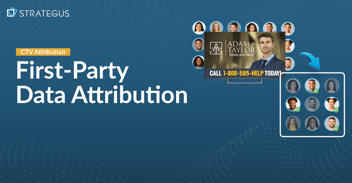
First-Party Attribution: Match Ads to Sales With CRM Data
The value of first-party data continues to grow.
7 minutes read

